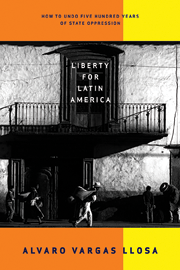The U.S. immigration reform proposals put forward by President Barack Obama and the Senate’s “Gang of Eight” are a step in the right direction. But they miss the lesson of experience: The future matters just as much as the present.
This means many foreign-born individuals could find themselves outside the law again a few years from now.
The proposed reforms would beef up border security, crack down on employers who hire illegal immigrants, grant a path to citizenship to millions of undocumented foreigners, and increase the number of visas available to certain classes of individuals, favoring some—those with advanced technical degrees, for example—over others. But these decisions will be made by politicians, not the market. A more flexible approach, in tune with the needs of the economy, would be better.
We’ve been down the reform road before. While technological advances will make employer verification and border interdiction more effective than in the past, the current initiatives are not much different from President Ronald Reagan’s 1986 amnesty. The main elements are the same: conditional legalization, enhanced border patrols and employer sanctions.
Yet that law is seen as a failure today—not for what it did in its time, but what it failed to do in ours.
Unanticipated Needs
The Reagan-era reforms did not anticipate the ways in which the needs of the market would circumvent the new restrictions, producing the estimated 11 million undocumented workers residing in the U.S. today. The same had happened with previous laws, most notably the Immigration and Nationality Act of 1965, which eliminated national origin quotas and emphasized, as the Obama proposal would, family reunification.
Lawmakers and their constituents need to understand three things. First, the number of immigrants needed to fill jobs in the U.S.—from picking fruit to writing computer code—is impossible to predict. Second, the U.S. would not be overrun by undocumented workers if a more flexible system was adopted, rather than setting predetermined immigration caps. Third, current immigrants do not pose an economic or cultural danger to the U.S., just as those of the 19th and early 20th centuries, equally maligned at the time, did not.
The notion that a more flexible system would open the floodgates is illogical. In the early part of the last decade, about 800,000 undocumented immigrants were entering the U.S. annually. By 2010, net migration from Mexico, the main country of origin, had dropped to zero. The principal reason was not border-patrol enhancement but the downturn in the economy. The same had happened after the dot-com bubble burst.
Similar patterns are noticeable elsewhere. In Spain, a major destination for Latin Americans and North Africans, migration has taken an ironic turn: Thousands of Spaniards now flock to northern Europe and Latin America.
The proportion of foreign-born people in the U.S., about 13 percent today, is similar to what it was during other periods in U.S. history. Until the 1920s, about 15 percent of the population was foreign-born. The 19th and 20th century averages are 10 percent.
The idea that immigrants take jobs from citizens, instead of filling the needs of the economy, is also false.
Consider Arizona. Before 2008, undocumented foreigners made up 10 percent of Arizona’s 3-million-plus workforce. But unemployment was a mere 4 percent. In other words, they were filling a vacuum, not pushing citizens aside.
As for the cultural danger posed by immigration, myth also rules. Undocumented workers today show similar acculturation patterns to those of the past. As a general rule, assimilation is strong among the second generation and complete by the third.
Similar Households
Immigrants’ values align closely with those of most U.S. households. The overwhelming majority of Latinos who have arrived since 1990 are Christian, mostly Catholic. Half of all undocumented immigrants live with a spouse and a child. While the proportion of single-parent households among citizens is one-third, among undocumented immigrants it’s 13 percent. Nearly 12 percent of immigrants are self-employed, similar to the percentage among citizens.
Lawmakers should heed these realities when they put together the new immigration law, creating a system that makes it easy for immigrants of various skill levels to enter according to the needs of the economy.
If they do, they will be surprised by how the tide of immigrants will ebb and flow naturally. The numbers at times will hardly be noticeable.












